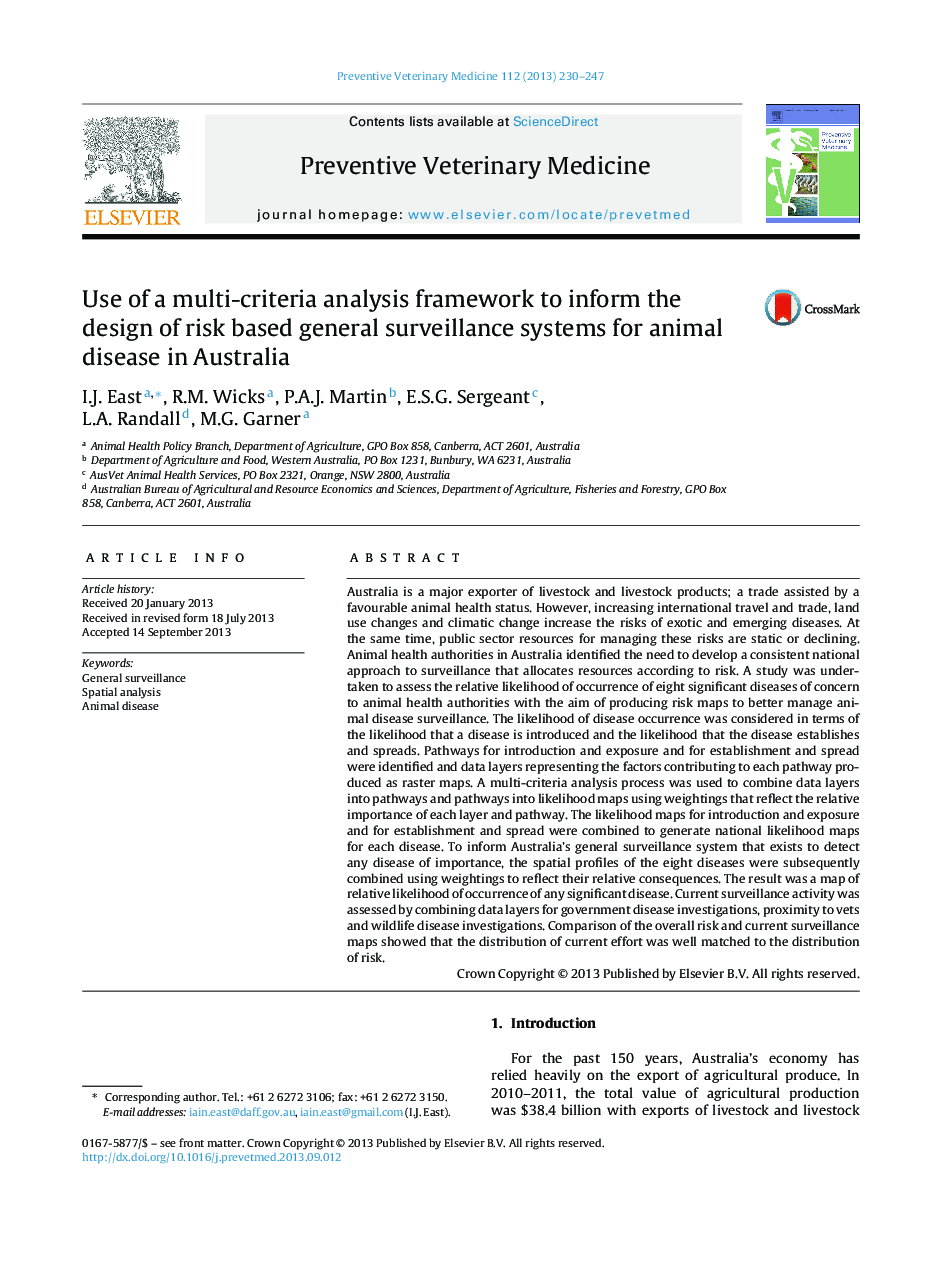| Article ID | Journal | Published Year | Pages | File Type |
|---|---|---|---|---|
| 5793624 | Preventive Veterinary Medicine | 2013 | 18 Pages |
Abstract
Australia is a major exporter of livestock and livestock products; a trade assisted by a favourable animal health status. However, increasing international travel and trade, land use changes and climatic change increase the risks of exotic and emerging diseases. At the same time, public sector resources for managing these risks are static or declining. Animal health authorities in Australia identified the need to develop a consistent national approach to surveillance that allocates resources according to risk. A study was undertaken to assess the relative likelihood of occurrence of eight significant diseases of concern to animal health authorities with the aim of producing risk maps to better manage animal disease surveillance. The likelihood of disease occurrence was considered in terms of the likelihood that a disease is introduced and the likelihood that the disease establishes and spreads. Pathways for introduction and exposure and for establishment and spread were identified and data layers representing the factors contributing to each pathway produced as raster maps. A multi-criteria analysis process was used to combine data layers into pathways and pathways into likelihood maps using weightings that reflect the relative importance of each layer and pathway. The likelihood maps for introduction and exposure and for establishment and spread were combined to generate national likelihood maps for each disease. To inform Australia's general surveillance system that exists to detect any disease of importance, the spatial profiles of the eight diseases were subsequently combined using weightings to reflect their relative consequences. The result was a map of relative likelihood of occurrence of any significant disease. Current surveillance activity was assessed by combining data layers for government disease investigations, proximity to vets and wildlife disease investigations. Comparison of the overall risk and current surveillance maps showed that the distribution of current effort was well matched to the distribution of risk.
Related Topics
Life Sciences
Agricultural and Biological Sciences
Animal Science and Zoology
Authors
I.J. East, R.M. Wicks, P.A.J. Martin, E.S.G. Sergeant, L.A. Randall, M.G. Garner,
